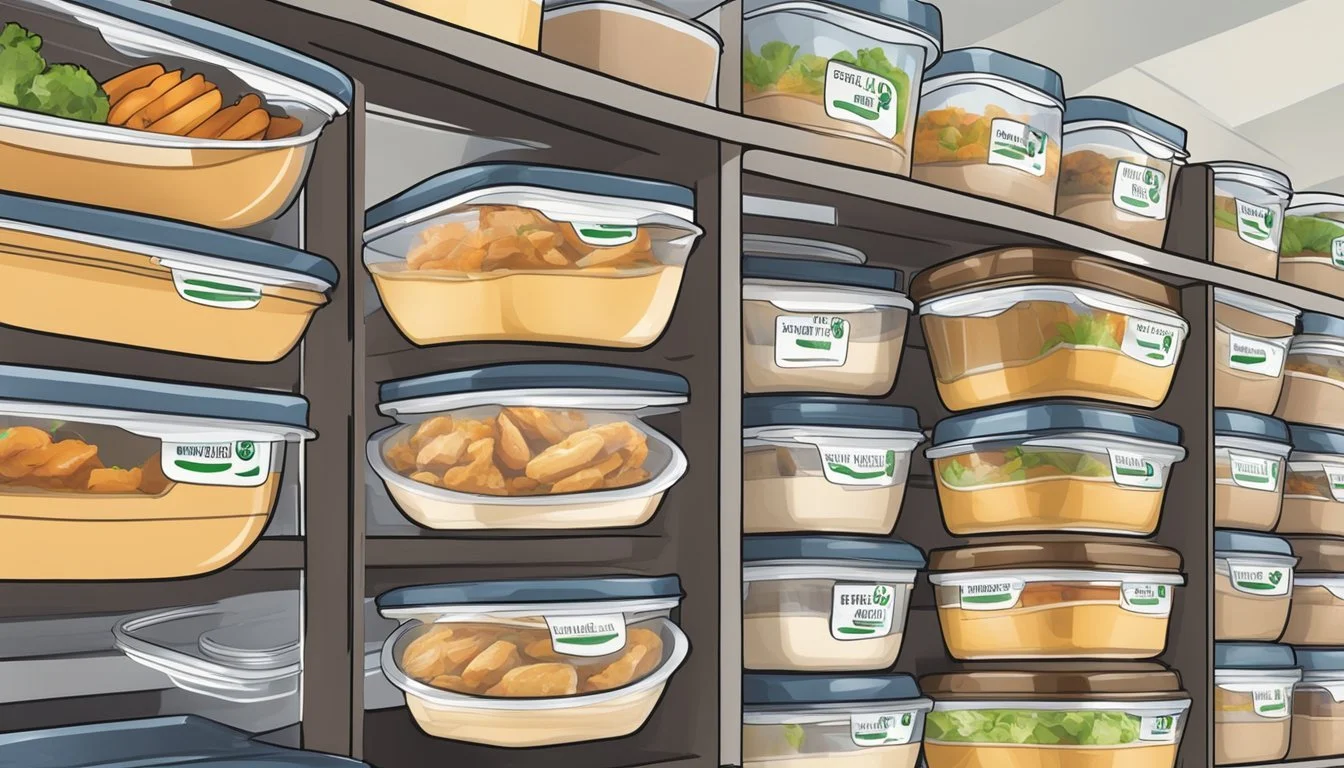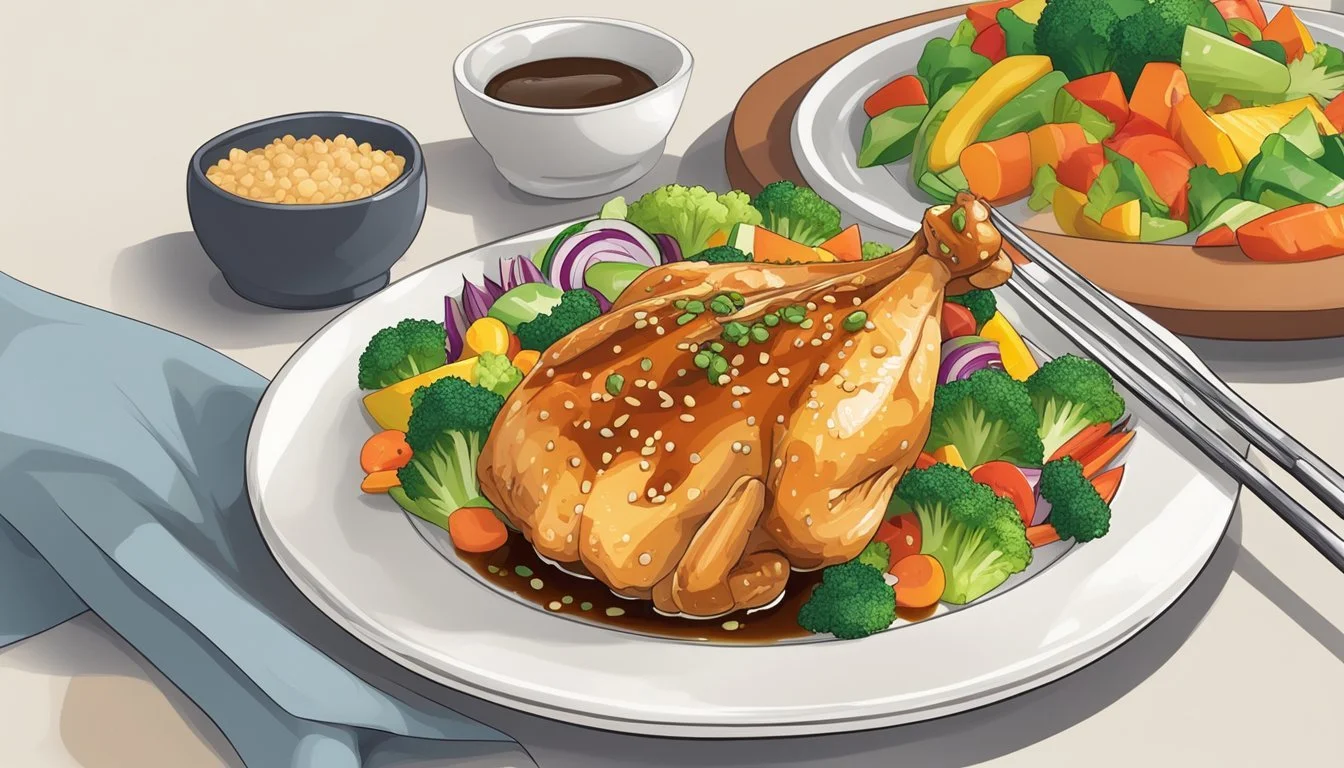How Long Does Gluten-Free Chicken Teriyaki Last?
Storage Tips and Shelf Life
When it comes to enjoying a delicious homemade gluten-free chicken teriyaki, knowing how long it lasts is crucial for both safety and flavor. Properly stored in an airtight container in the refrigerator, gluten-free chicken teriyaki can last up to 3-4 days. This ensures the meal stays fresh and maintains its taste.
To maximize the shelf life and enjoy your meal safely, proper storage is important. After cooking and allowing the teriyaki to cool, it should be promptly placed in an airtight container and put in the fridge. This helps prevent bacterial growth and keeps the dish safe for consumption.
For those looking to extend the shelf life further, gluten-free chicken teriyaki can be frozen for up to three months. Be sure to use freezer-safe containers and label them with dates for easy tracking. Defrosting and reheating properly will ensure the best flavor and texture.
Understanding Gluten-Free Chicken Teriyaki
Gluten-free chicken teriyaki combines the flavors of soy sauce, ginger, garlic, and other key ingredients. The preparation techniques vary but often involve marinating, pan-frying, and simmering.
Key Ingredients
Gluten-free chicken teriyaki relies on specific ingredients to replicate the traditional teriyaki flavors. At its core, the dish features gluten-free soy sauce or tamari, which is crucial for maintaining the recipe's gluten-free status. Coconut aminos can also be used as an alternative for a soy-free option.
Chicken is the main protein, usually boneless and skinless, to ensure even cooking. Garlic and ginger are essential aromatics, providing depth and complexity to the sauce.
Sugar or honey adds sweetness, balancing the savory elements. Arrowroot or cornstarch helps thicken the sauce, ensuring it clings to the chicken.
Preparation Techniques
The preparation of gluten-free chicken teriyaki involves several steps to bring out the best flavors. First, marinate the chicken using a mixture of gluten-free soy sauce, garlic, ginger, and sweeteners like sugar or honey.
Marinating times can range from 15 minutes to an hour.
Cooking the chicken usually starts with heating oil in a non-stick skillet over medium-high heat. The chicken is then pan-fried until browned and reaches an internal temperature of 160 degrees Fahrenheit.
The prepared sauce is added to the chicken, simmered, and thickened with arrowroot or cornstarch, resulting in a glossy finish.
Storage Fundamentals
Proper storage is key to maintaining the quality and safety of gluten-free chicken teriyaki. The following guidelines on container choice, temperature control, freezing methods, and thawing techniques will help ensure the best results.
Proper Containers and Temperatures
Using airtight containers is essential for storing gluten-free chicken teriyaki. Glass or plastic containers with tight-sealing lids help prevent exposure to air and moisture, which can cause spoilage. Zip-top bags are also effective, especially when squeezing out excess air before sealing.
For short-term storage, refrigeration is recommended. Ensure the refrigerator maintains an internal temperature of below 40°F (4°C). This helps slow microbial growth and keeps the dish safe to eat for up to 3-4 days.
Labeling the containers with the date can help track freshness. Avoid overcrowding in the refrigerator, which can restrict airflow and lead to uneven cooling.
Freezing and Thawing Guidelines
Freezing is ideal for long-term storage. Place the chicken teriyaki in freezer-safe containers or zip-top bags, eliminating as much air as possible to prevent freezer burn. Freezing the dish ensures it remains safe to eat for up to 3 months.
When it's time to use the frozen chicken teriyaki, thawing should be done safely. The best method is to move it to the refrigerator and allow it to thaw gradually over 12-24 hours, maintaining a stable environment below 40°F (4°C).
If speed is necessary, use a cold water bath by submerging the sealed bag in cold water, changing the water every 30 minutes. Avoid thawing at room temperature to prevent bacterial growth.
By following these guidelines, you can enjoy gluten-free chicken teriyaki that remains fresh, safe, and delightful.
Nutritional Profile
Gluten-free teriyaki chicken offers a nutritious option, packed with essential macronutrients and micronutrients that benefit overall health. This section breaks down the key components such as calories, protein, carbohydrates, and important vitamins and minerals.
Caloric and Macronutrient Breakdown
A typical serving of gluten-free teriyaki chicken contains around 250-300 calories. The calorie content may vary based on the specific ingredients and portion sizes used in the recipe.
Protein: Each serving delivers approximately 20-25 grams of protein, which is crucial for muscle repair and growth.
Carbohydrates: The dish usually provides around 15-20 grams of carbohydrates, including the sugars found in the teriyaki sauce.
Fat: It contains about 10-15 grams of fat, depending on the oil used for cooking. Healthy fats are important for overall cellular function and energy.
Micronutrients and Health Benefits
Gluten-free teriyaki chicken is rich in several essential micronutrients:
Iron: This dish often provides a decent amount of iron, which is vital for transporting oxygen in the blood.
Sodium: While offering about 500-600 milligrams of sodium per serving, it's essential to balance with lower-sodium meals to avoid excessive intake.
Fiber: Typically, the fiber content might be low unless served with high-fiber sides like broccoli, which offers additional benefits for digestive health.
Vitamins and Minerals: The inclusion of vegetables can add vitamins A, C, and K, contributing to immune support and bone health.
By including a variety of vegetables and lean meats, this dish ensures a balanced intake of necessary nutrients.
Cooking and Serving Suggestions
When preparing gluten-free teriyaki chicken, pairing it with the right side dishes and presenting it well can enhance the dining experience. Here are some tips to make your meal complete.
Ideal Side Dishes
Rice: White rice or brown rice is a classic side that complements teriyaki's savory flavors. For a healthier option, consider cauliflower rice.
Vegetables: Steamed or roasted vegetables, such as broccoli, carrots, and snap peas, add color and nutrients to your meal. Adding green onions on top of the vegetables and chicken adds a fresh crunch and mild flavor.
Salad: A simple green salad with a light dressing pairs well with the rich teriyaki sauce, balancing the flavors and textures.
Serving Sizes and Presentation
Portioning: When serving gluten-free teriyaki chicken as a weeknight dinner for a family, portion sizes can vary. Typically, one pound of chicken serves four people. For individual servings, aim for about 4-6 ounces of chicken per person.
Plating: For a visually appealing presentation, consider placing the rice or cauliflower rice as a base, topped with the teriyaki chicken. Arrange steamed vegetables on the side or around the chicken.
Garnishes: Sprinkle sesame seeds and finely chopped green onions on top of the chicken just before serving. These add texture and a finishing touch that enhances both the look and taste of the dish.
By following these suggestions, you can create a balanced, delicious, and attractive meal that appeals to both the palate and the eyes.
Safety and Quality Concerns
Storing gluten-free chicken teriyaki properly ensures its safety and quality. It’s crucial to recognize spoilage signs and understand the health risks of consuming improperly stored food.
Recognizing Spoilage Signs
Spoiled gluten-free chicken teriyaki exhibits noticeable changes in appearance, smell, and texture. Visually, the dish may have a dull or slimy surface, indicating bacterial growth. Any color change or mold presence is a clear warning sign.
The smell of spoiled food is often sour or unpleasant, signaling it’s no longer safe to eat. Additionally, the texture may be excessively mushy or sticky, which suggests that the chicken has gone bad. Promptly discard leftovers showing any of these signs to avoid health risks.
Health Risks of Improperly Stored Food
Improperly storing gluten-free chicken teriyaki poses significant health hazards. Bacteria such as Salmonella and Campylobacter can multiply if the food is left at room temperature for too long, leading to foodborne illnesses. Symptoms of such illnesses range from mild gastrointestinal discomfort to severe conditions requiring medical attention.
To minimize these risks, leftovers should be refrigerated within two hours of cooking. They should be stored in airtight containers and consumed within 3-4 days to ensure safety. Reheating leftovers to an internal temperature of at least 165°F (74°C) also helps eliminate harmful bacteria.
Optimizing Shelf Life
Ensuring the longevity of gluten-free chicken teriyaki involves proper ingredient selection and storage practices. Both elements play crucial roles in maintaining flavor and texture, reducing waste, and ensuring safety.
The Impact of Ingredients on Shelf Life
The ingredients used in gluten-free chicken teriyaki directly affect its shelf life. Fresh ginger and minced garlic provide robust flavors but can spoil quicker than their dried counterparts like garlic powder. Incorporating arrowroot powder instead of cornstarch may also enhance texture while maintaining a more stable profile over time.
Using high-quality olive oil aids in preserving parts of the flavor without compromising the integrity of the dish. It's essential to use a well-balanced amount of salt and pepper in the mix as they act as natural preservatives. Ensuring that the gluten-free teriyaki sauce is prepared under hygienic conditions further mitigates the risk of spoilage.
Best Practices for Prolonging Freshness
Storing gluten-free chicken teriyaki properly is essential for extending its shelf life. Use a non-stick skillet to evenly cook the chicken to reduce bacterial growth. After cooling, immediately place the chicken teriyaki into airtight containers. Store in the refrigerator if it will be consumed within 3-4 days.
For longer storage, freezing is ideal. Ensure the dish is placed in freezer-safe containers to avoid freezer burn. Remember to label each container with the preparation date. When reheating, use a skillet over medium heat and add a bit of water or additional gluten-free teriyaki sauce to maintain moisture.
Following these practices ensures that the dish retains its flavors—such as the sweetness from the maple syrup and the savory taste from the ginger and garlic—while staying safe to consume.








